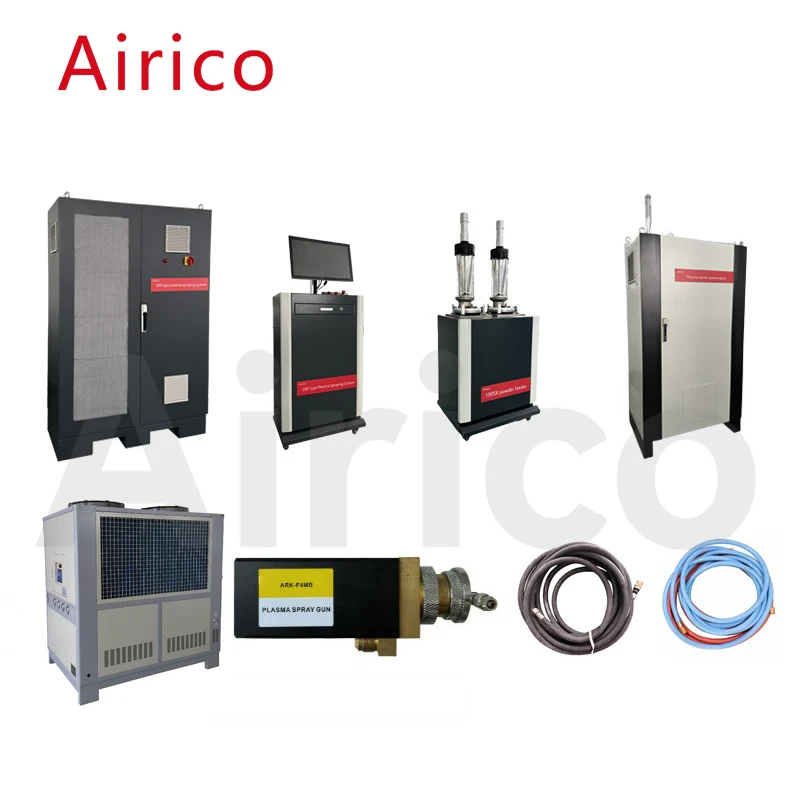Choosing the Right Plasma Spraying Equipment for Your Needs
2025-01-15
When it comes to applying high-performance coatings to components, plasma spraying is one of the most effective methods. However, with a wide range of plasma spraying equipment available on the market, selecting the right system can be a challenging decision. The choice depends on several factors, including the materials being coated, the required coating properties, and the operational conditions. In this post, we’ll guide you through the key considerations when choosing plasma spraying equipment.
Factors to Consider When Choosing Plasma Spraying Equipment:
1. Type of Feedstock Material:
The first step in selecting plasma spraying equipment is understanding the type of feedstock material you plan to use. Plasma spraying can utilize powders, wires, or rods, and the equipment must be compatible with the chosen form of feedstock.
- Powders: Typically used for coatings requiring finer texture and more uniformity. Powders are suitable for intricate or small parts.
- Wires: Wires are often chosen for applications requiring thicker coatings or those where feedstock material needs to be continuously applied in a controlled manner.
- Rods: These are less common but may be chosen for specific coating applications requiring larger, more robust layers.
2. Power Supply Requirements:
Plasma spraying involves high-energy operations, so the power supply of the equipment plays a significant role in determining its performance. The plasma torch requires a reliable and steady power supply to generate the necessary temperatures and maintain consistent arc quality.
- Low Power: Suitable for small-scale applications or coatings that don’t require high temperatures.
- High Power: Essential for larger applications or materials that require very high temperatures for melting and spraying.
3. Plasma Gas Selection:
The type of plasma gas used in the spraying process has a significant impact on the quality of the coating. Argon, hydrogen, and nitrogen are the most commonly used gases. Each gas influences the arc temperature, stability, and spray quality.
- Argon: The most commonly used gas for general plasma spraying. It provides a stable and controllable arc with consistent heat.
- Hydrogen: Often used in combination with argon for specific coatings that require higher temperatures.
- Nitrogen: Ideal for applications involving ceramic or carbide coatings that require high arc stability.
4. Cooling System:
Given the extreme temperatures generated by plasma spraying, an efficient cooling system is crucial. You will need to decide between air cooling or water cooling, depending on the size and operational demands of your equipment.
- Air-Cooled Systems: These are less complex and are often sufficient for smaller, less demanding operations.
- Water-Cooled Systems: Required for more intensive applications or equipment that operates for extended periods. These systems offer better thermal management and can increase the longevity of the plasma torch.
5. Coating Thickness and Precision:
The required coating thickness and precision will influence the type of plasma spraying equipment you need. Some systems allow for highly precise coatings with minimal waste, while others are designed for thicker, more robust layers.
- Thin Coatings: For applications requiring thin coatings with excellent adhesion and fine detail, precise control systems are essential.
- Thicker Coatings: If you need to apply thicker coatings for wear or corrosion resistance, a more powerful system with higher feedstock delivery capacity may be necessary.
6. Equipment Size and Accessibility:
Depending on the size and scope of your operation, you may need to choose between manual, semi-automatic, or fully automated plasma spraying systems. Manual systems are more affordable and flexible, while automated systems can offer higher throughput and consistency.
- Manual Systems: Good for small-scale operations, prototyping, or situations where flexibility is needed.
- Automated Systems: Perfect for larger-scale production with high consistency and repeatability in coating applications.
Selecting the right plasma spraying equipment is crucial for achieving the desired coating performance and efficiency. By considering factors such as feedstock material, power supply, plasma gas choice, cooling systems, and coating precision, you can ensure that your plasma spraying system meets the demands of your industry and application.



